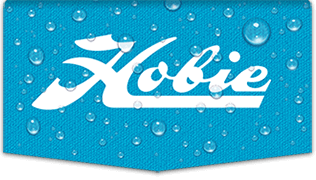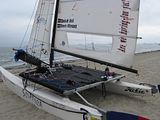IturbeR wrote:
hrtsailor, my guess is you know where does spots are on the hobie hull.
You wouldn't mind telling where exactly is the center of resistance or how to calculate it??
maybe even get the hobie hull plans and put them on some software like maxsurf or something to get those points exactly...
Good luck with that.
Meanwhile, using non-computer techniques (how do you think this stuff was done before people relied on computers?), you can quickly come up with an approximation:

(the bow-down attitude is typical for racing in light/medium air)
I guarantee that these approximations are as accurate as any you will get out of a computer.
However, these are not static problems. A Hobie 16 sailing upwind is
highly dynamic. Wave state, weight position, boat speed and a host of other variables make this an essentially unsolvable problem. Kind of like the
Heisenberg Uncertainty Principle.
Ultimately, you should set up
your boat the way that feels most comfortable for
you.
However, when it comes to racing, I'm going to stick with 35+ years of development (with the Aussies kicking our ass) and rake the mast back as far as I can and still sheet in enough to keep the top of the main from twisting to leeward. When I'm two-blocked going to weather, there's less than 6" between the boom and the rear crossbar.








